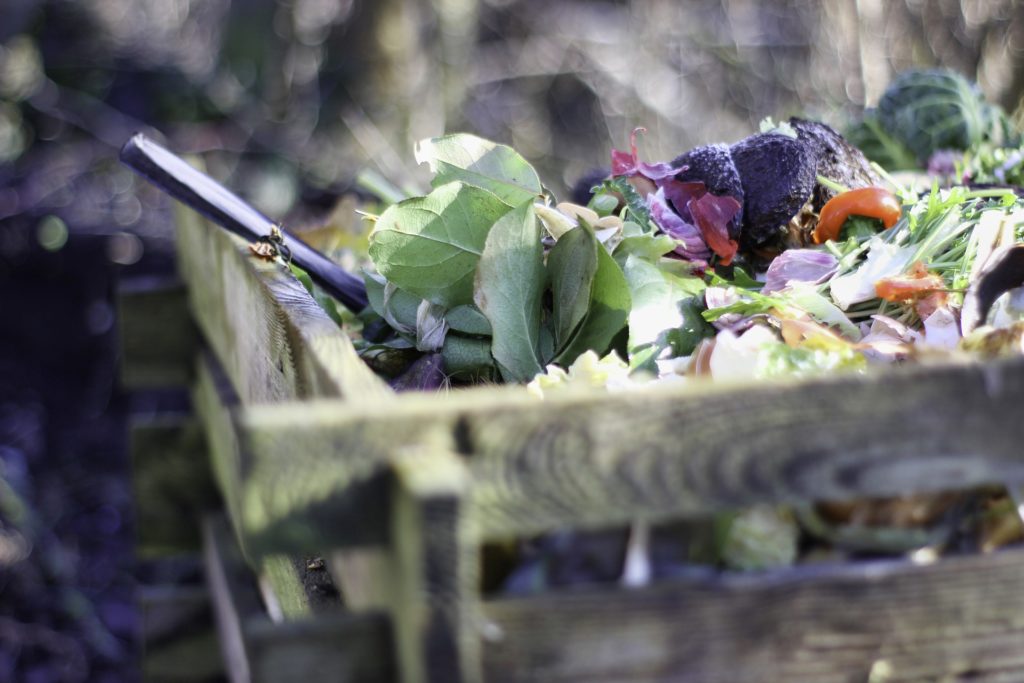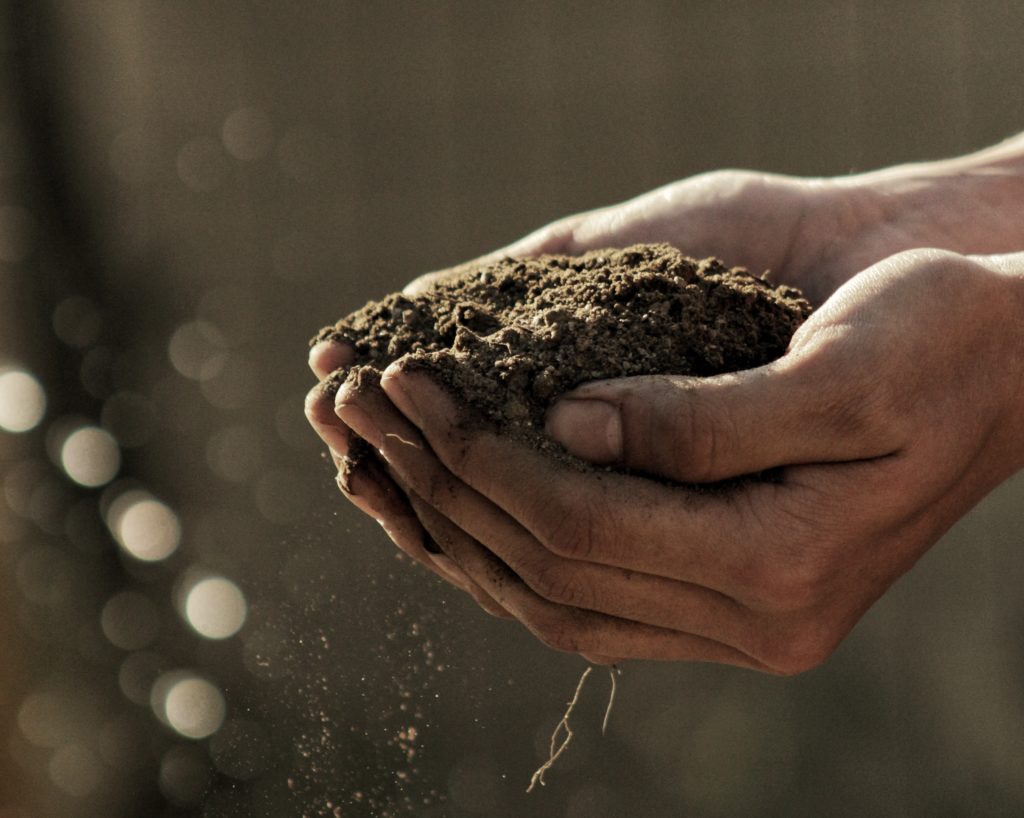How does industrial composting work?
Industrial composting is a natural process for revalorizing our organic wastes in LARGE quantities! How does industrial composting work? What types of waste can be found there? What happens to the final compost? Here’s everything you need to know!
What is industrial composting?
If you are not (yet) a compost expert, you probably already seen the words “OK compost INDUSTRIAL” on some of your plastic packaging. This label, granted by the organization Tüv Austria, is a real verification marker and informs consumers that products meet the requirements for different biodegradation environments under industrial composting conditions.
Industrial composting is a natural process for revalorizing our organic wastes in LARGE quantities! How does industrial composting work? What types of waste can be found there? What happens to the final compost? Here’s everything you need to know!
Industrial composting in few figures
Composting, in the broadest sense, is a process for transforming fermentable materials (waste composed exclusively of biodegradable organic matter). Great for local waste management, the final compost can be used to improve soil structure and fertility.
Composting exists in different forms, which can be used in a complementary way.
– Domestic composting: carried out directly from your garden or balcony. A practice that has been developing for several years, notably because it reduces the volume of our waste by 30% and the compost obtained allows budding gardeners to provide with natural fertilizer.
– Shared composting, also known as “Community” scaled composting: this is a neighborhood composting process, carried out near buildings, in a common area. Inhabitants directly bring their waste in a dedicated composter, the perfect solution for the most urban among us.
– And finally, industrial composting, characterized by medium to very large-capacity facilities (from 2,000 to 100,000 tons/year or more) and supplied by collection systems.
Industrial composting is therefore characterized by a larger volume of waste treated, but also by its standardized process, with high and controlled temperatures.
It was at the end of the 1960s that the first composting platforms came out of the ground, but it was at the beginning of the 1990s that composting really took off, in particular to transform green waste into an organic amendment.
According to the audit conducted in 2006 by ADEME, there were 820 composting platforms in France that year, treating about 6 million tons of waste per year (including 4 million tons of green waste and 1 million tons of raw sludge per year). Selectively collected household bio-waste represented 1.3 million tons. This figure is likely to grow significantly in the coming years in France. Indeed, following the Energy Transition Act of August 17, 2015, sorting of bio-waste at source will be generalized (by January 1, 2024 at the latest). Before this date, each community will therefore have to provide solutions enabling citizens to stop throwing their bio-waste in residual household waste. When domestic composting will not be possible, a collection system will therefore be set up… and will take our organic waste (including compostable packaging) to industrial composting centers!
How does industrial composting work?
Industrial composting is an aerobic treatment process (with oxygen), made possible by the action of micro-organisms, under controlled conditions.
There are three families of industrial composting processes:
– slow composting: aeration is obtained by turning over the windrows (mixing the composted materials in long narrow heaps) using specific agricultural equipment;
– accelerated composting in open air;
– accelerated composting under a building structure.
2/3 of the platforms use slow composting. Accelerated composting in open air or under building structures is preferred for the treatment of green waste and sludge, particularly to avoid bad odors.
Waste treated by industrial composting
Because industrial composting involves a process of aerobic transformation of organic matter, the treated waste must allow sufficient air circulation to help the respiration of micro-organisms. Materials that are too thin or too soggy (such as sewage sludge) must be mixed with structuring agents (a mixture of wood for example). Here are the different materials that can be used:
– Green waste: dead leaves, mowing, pruning, pruning residues, waste from green spaces, private gardens, etc.;
– WWTP sludge: sludge produced in urban water treatment plants;
– Bio-waste from large producers: organic waste such as food from supermarkets, restaurants, canteens, etc…;
– Household bio-waste: kitchen waste such as peelings, compostable packaging, etc.;
– Livestock effluents: manure;
– Organic waste of agricultural or industrial origin: paper mill sludge, food and pharmaceutical waste, fruits and vegetables from withdrawals, etc.
The stages of industrial composting
- Waste preparation
Before any composting process, it is necessary to ensure the quality of the organic matters that will be treated. Indeed, in the opposite case, pollutants integrated in certain matters might degrade the final compost making it unusable. It is therefore customary to sort the matters on receipt.
- Shredding
Especially for wood type wastes.
- Fermentation
It is at this stage that the biological process of transforming waste into compost begins. The fermentable materials placed in a windrow (in a continuous belt) or pile are turned, ventilated and watered to activate the degradation process. The increase in temperature during this phase ensures the sanitation of the matters. The fermentation of the compost lasts several weeks.
- Maturation
Lasts for several months and allows the matter to be transformed into humic compounds.
- Sifting
Consists of sieving the compost at the end of maturation, allows the elimination of undesirable elements and to reach the desired granulometry (texture) according to the intended use of the compost.
- Storage
This step should stabilize the product and provide a fertilizer with given agronomic characteristics.
The compost treatment period last from 6 months to one year. However, most industrial composting platforms must reduce maturation times in order to make the most of the space, avoid saturation of the installation and receive more matter.
How is industrial compost used?
The organic valorization of biodegradable waste allows to produce a compost or a digestate. Because of their high content of organic matter and nutrients essential for crop development, these matters can then be used in agriculture to fertilize the soil and replace mineral fertilizers. What could be better than locally produced fertilizers … a great alternative to chemical fertilizers!
In France, 62% of the composts produced are used in agriculture. The field crop sector is the largest consumer with 92% of the outlets (source ADEME 2006). And the development of compost production will be a good thing when we know that currently 36% of our land lacks organic matter!
After agriculture, industrial compost is also used by:
– communities (green space services);
– vegetalization (highways, railways, quarry rehabilitation, etc.);
– individuals (who can buy it in shops).
Evanesto® : towards “universal” composting
Industrial composting concerns the transformation of waste from organic matters. What about composting plastic packaging?
Today, it is already possible to compost your plastic packaging: in industrial conditions when they are certified with “OK compost INDUSTRIAL” label, in domestic conditions when they are certified with “OK compost HOME” label.
These packaging are made from PLA, a promising bioplastic since it is both biosourced (of plant origin) and biodegradable. However, its biodegradability was until now limited to rather thin applications (such as fruit & vegetable bags) and to industrial composting conditions…
Carbiolice created Evanesto® to address the limitations of PLA. Thanks to Evanesto® it is now possible to make more rigid applications (such as trays, yoghurt pots, etc.) compostable in industrial conditions, but not only!
Thanks to its Evanesto® solution, Carbiolice also offers “universal composting“, by accelerating the disintegration capacity of PLA, the end of life of these products, even rigid, can be considered as much in industrial composting conditions, as in methanization or even domestic composting!
Sources :
https://www.ademe.fr/expertises/dechets/passer-a-laction/valorisation-organique/compostage
https://www.ademe.fr/sites/default/files/assets/documents/fiche-technique-le-compostage-201511.pdf
Audit ADEME 2006
These articles may interest you
As plastic pollution has emerged as a significant societal concern, numerous international organizations, including governments, unions, industries, research centers, certification and standardization bodies, and others, are actively engaged in developing and adopting new materials, such as biodegradable and compostable polymers.
At the national level, legislation is being enacted to establish dedicated composting systems, with the objective of reducing the use of conventional plastics in single-use products and non-recyclable plastics. These efforts are manifested through standards and labels affixed to products, serving as evidence of their compliance.
Biodegradable bio-based plastics are emerging as a complementary solution to recycling in the fight against pollution. However, in a period where land and water are also becoming critical concerns on a global scale, what impact will the development of biosourced plastics production have on our farmland?
100% biosourced and biodegradable, PLA is one of the first renewable plastics capable of competing with conventional plastics in terms of both performance and environmental impact! Emitting three times less CO2 and already available on the market, PLA could well contribute to reconciling plastics with the planet. Find out everything you need to know about this bioplastic!

